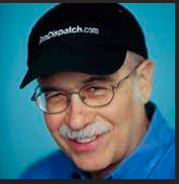The Museum and Memorial proved a deeply overwhelming experience for me, a sudden rush of long-ago race history being imprinted in the deep recesses of my mind. For many of those on the visit that day, it was emotional, but as the only Black person in our group to have lived through segregation and Jim Crow, I found it a genuinely wrenching physical experience. And yet while I felt distinctly ill at ease, shaken by what I had seen at the museum and memorial, within hours I began to feel powerful for the part I had played once upon a time as an activist in the Civil Rights Movement. That activism, I suddenly realized, had made me a better, stronger person, and I was reminded that the 400 years of Black struggles for equal rights in this country had not only inspired the nation, but the world.
Authoritarianism and Racism
Today, racism in this country is still a central force that progressives are working to change. We are, after all, living in a period when authoritarianism, racism, and incipient fascism are all on the rise again and, of course, Donald Trump is giving all-too-vivid voice to the hate that goes with them.
In a New Yorker article in 2016, Nobel Prize winner Toni Morrison wrote of the existential place of race for Whites in America this way:
"All immigrants to the United States know (and knew) that if they want to become real, authentic Americans they must reduce their fealty to their native country and regard it as secondary, subordinate, in order to emphasize their whiteness. Unlike any nation in Europe, the United States holds whiteness as the unifying force. Here, for many people, the definition of 'Americanness' is color."
At another point in that year of Trump's first presidential victory, she added:
"On Election Day, how eagerly so many white voters -- both poorly educated and the well-educated -- embraced the shame and fear sowed by Donald Trump. The candidate whose company has been sued by the Justice Department for not renting apartments to black people. The candidate who questioned whether Barack Obama was born in the United States, and who seemed to condone the beating of a Black Lives Matter protester at a campaign rally. The candidate who kept black workers off the floors of his casinos. The candidate who is beloved by David Duke and endorsed by the Ku Klux Klan.
"William Faulkner understood this better than almost any other American writer. In 'Absalom, Absalom,' incest is less of a taboo for an upper-class Southern family than acknowledging the one drop of black blood that would clearly soil the family line. Rather than lose its 'whiteness' (once again), the family chooses murder."
And the great James Baldwin in his classic 1955 analysis of race in America, Notes of a Native Son, wrote:
"No road whatever will lead Americans back to the simplicity of this European village where white men still have the luxury of looking on me as a stranger. I am not, really, a stranger any longer for any American alive. One of the things that distinguishes Americans from other people is that no other people has ever been so deeply involved in the lives of black men, and vice versa. This fact faced, with all its implications, it can be seen that the history of the American Negro problem is not merely shameful, it is also something of an achievement. For even when the worst has been said, it must also be added that the perpetual challenge posed by this problem was always, somehow, perpetually met. It is precisely this black-white experience which may prove of indispensable value to us in the world we face today. This world is white no longer, and it will never be white again."
Many in this diverse nation have compelling stories to tell, generating energy to battle the reactionary right-wing efforts to roll back any progress that has been made in past decades. In my life, I have endured the hardships of racism, as have so many others. However, my family, community, and various forms of activism enabled me to survive.
Walking in the Shoes of Black People in History
It is critical, even in Donald Trump's America, that our activism remain nonviolent, tactical, and practical. We can reflect on a momentous decision by Martin Luther King, Jr., James Bevel, Wyatt Walker, Fred Shuttlesworth, Ralph Abernathy, and other civil rights leaders in Birmingham, Alabama, in the spring of 1963. Out of desperation, they decided to use high school students in demonstrations there in what became known as "the Children's Crusade," recognizing that Eugene Bull Connor, the notorious segregationist commissioner of public safety in that city, would employ violence against them. And, of course, he did. He ordered dogs and water cannons turned on those demonstrations, saying, "I want to see the dogs work. Look at those niggers run."
The very brutality of Bull Connor, seen across the country and the world on the TV news, generated tremendous support for the civil rights movement.
I suspect that King, Bevel, Walker, Shuttlesworth, Abernathy and the other civil rights leaders in Birmingham knew that using high school students involved enormous risk, but those students already lived under segregation and racism and were walking in the shoes of others who had been similarly courageous in the past and this, of course, would be their contribution to civil rights.
Wyatt Walker explained what he did by indicating that he made no apology for using such a tactic to reveal the racist brutality of the grim system of segregation to the whole nation. He said, "I had to do what had to be done."
(Note: You can view every article as one long page if you sign up as an Advocate Member, or higher).





